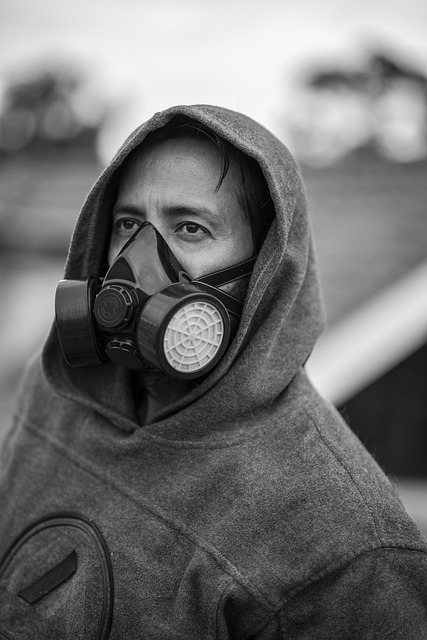DIY pipe insulation is an affordable, effective way for homeowners to reduce energy costs and improve system efficiency. By insulating pipes in attics, basements, or exterior walls, you prevent heat loss/gain, creating a protective barrier that retains desired fluid temperatures. Gather foam, fiberglass, or rubber insulation, utility knife, scissors, measuring tape, gloves, and goggles; cut and install the material to fit precisely around pipes, securing gaps with foam and thermal tape. This simple project contributes to environmental sustainability while saving on bills.
Looking to slash your energy bills and contribute to a greener home? DIY pipe insulation is an effective, cost-saving solution. This guide breaks down everything you need to know, from understanding the importance of insulating pipes—and its numerous benefits—to gathering the necessary materials and tools for your project. Follow our simple, step-by-step instructions to effectively insulate your pipes yourself and watch those energy costs decline.
- Understanding Pipe Insulation: Why It Matters and Its Benefits
- Gathering Materials and Tools for Your DIY Project
- Step-by-Step Guide to Effectively Insulate Pipes Yourself
Understanding Pipe Insulation: Why It Matters and Its Benefits

Pipe insulation is an often-overlooked yet critical component in maintaining efficient heating and cooling systems in your home or business. It’s more than just a way to keep pipes from freezing; it plays a significant role in energy conservation. By insulating pipes, you prevent heat loss during cold weather and heat gain during hot seasons, which directly impacts your energy bills. This simple DIY project can lead to substantial savings over time by reducing the workload on your HVAC systems.
Insulating pipes is particularly beneficial for exposed piping in attics, basements, or exterior walls. These areas can experience significant temperature fluctuations, leading to energy waste. With proper insulation, you create a protective barrier that retains the desired temperature of the fluid flowing through the pipes, ensuring optimal efficiency. It’s an affordable and accessible solution for homeowners looking to take control of their energy usage and contribute to a greener environment.
Gathering Materials and Tools for Your DIY Project

Before starting your DIY pipe insulation project, it’s crucial to gather the right materials and tools. For this task, you’ll need an assortment of items such as pipe insulation in the appropriate size, a utility knife or scissors for cutting, and possibly some tape to secure the insulation. Insulation itself comes in various types, like foam, fiberglass, or rubber, each offering unique benefits for different applications. Make sure to choose one that’s suitable for your pipe material and climate conditions.
Additionally, consider having a measuring tape on hand to accurately determine the length of pipes that need insulating. Safety gear is also essential, including gloves and goggles to protect against sharp edges and dust. Having these essentials ready will ensure a smoother DIY pipe insulation process, helping you save on energy costs effectively.
Step-by-Step Guide to Effectively Insulate Pipes Yourself

Insulating your pipes is a straightforward DIY project that can significantly reduce energy costs and protect your plumbing system. Here’s a step-by-step guide to help you effectively insulate your pipes yourself.
1. Identify Pipes to Insulate: Start by locating the pipes in your home that need insulation, such as water supply lines, heating lines, or pipes near exterior walls. Ensure these are accessible and not buried behind drywall or other structures.
2. Gather Materials: Collect materials suitable for DIY pipe insulation, including pipe insulation rolls or foam sheeting specifically designed for this purpose. These come in various widths and thicknesses; choose the right fit based on your pipe sizes. Don’t forget to grab some scissors, a utility knife, and thermal tape for sealing.
3. Measure and Cut Insulation: Measure the length of pipes you need to insulate. Cut the insulation material to size using scissors or a utility knife. Ensure the cuts are tight and precise to maximize effectiveness.
4. Install Insulation: Wrap the insulated rolls or sheets around the pipes, ensuring they fit snugly. For pipes that meet walls or floors, use the appropriate type of insulation foam to fill gaps and maintain the insulation’s efficiency.
5. Seal with Thermal Tape: After wrapping the pipes, secure the insulation using thermal tape. This step ensures no air leaks and maintains the insulating properties. Thoroughly seal all joints and connections for optimal results.
DIY pipe insulation isn’t just a project for cost-conscious homeowners; it’s an effective way to conserve energy and protect your pipes. By understanding the importance of insulation, gathering the right materials, and following simple steps, you can significantly reduce energy costs and contribute to a more efficient home environment. Embracing DIY projects like this one empowers you to take control of your energy usage and make informed choices for your living space.
